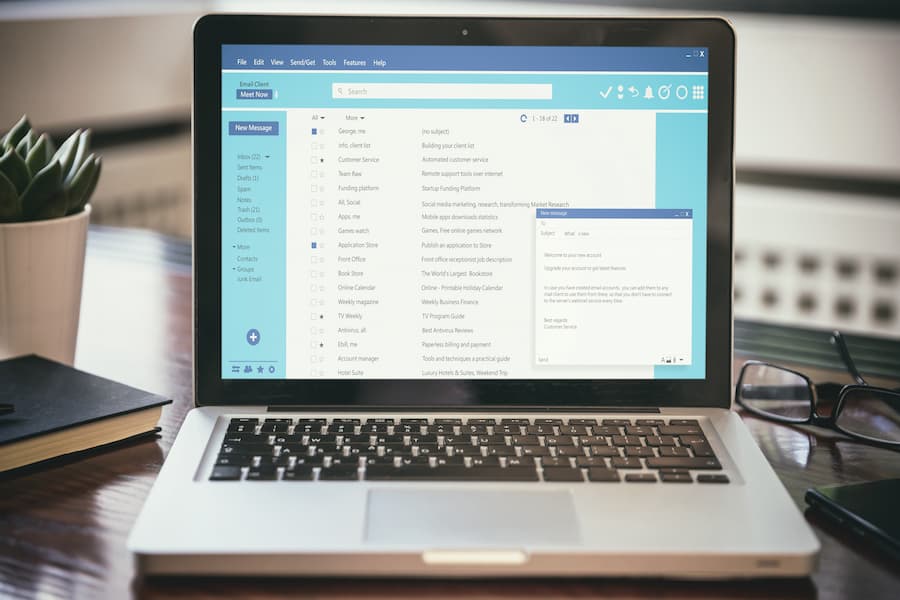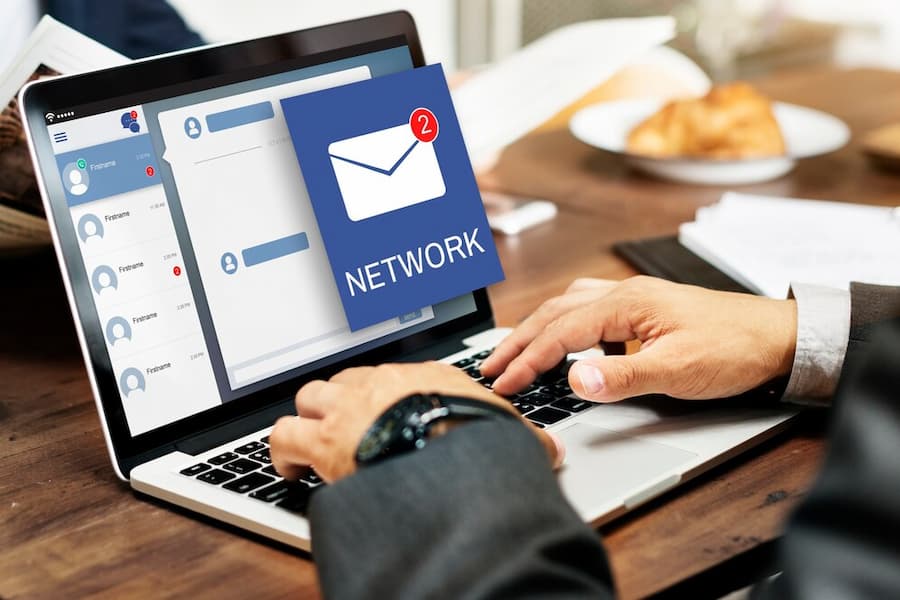The Importance of Secure Email Software in Today’s Digital Age
Secure Email Software
Email is a fundamental tool for communication in the digital era, used by individuals and businesses alike. Secure email software is designed to protect this vital communication channel. It employs various methods, such as encryption and authentication, to ensure that your emails remain private and protected from cyber threats.
The importance of email security cannot be overstated. Cyberattacks targeting email systems are on the rise, making it essential for everyone to prioritize secure email practices. Understanding the value of secure email software can help safeguard sensitive information and maintain privacy in both personal and professional correspondence.
Understanding Secure Email Software
What is Secure Email Software?
Secure email software refers to programs designed to protect email communications from unauthorized access and threats. These solutions offer a range of core features, including encryption, authentication, and threat detection.
There are various types of secure email software. Encryption-based software ensures that the content of emails is readable only by the intended recipient. This process involves converting the email into a code that can only be deciphered by the recipient’s email client. On the other hand, authentication-based software focuses on verifying the identity of the email sender and recipient to prevent unauthorized access and phishing attacks.

In addition to these, some secure email solutions combine multiple security measures, offering a more comprehensive approach to email protection. Therefore, choosing the right type of secure email software depends on your specific needs and the level of security required.
How Secure Email Software Works
Secure email software employs several encryption methods to protect email content. End-to-end encryption ensures that the email is encrypted on the sender’s device and remains encrypted until it reaches the recipient. This method guarantees that no third party, not even the email service provider, can access the email’s content. Another common method is TLS encryption, which secures the connection between the email client and the server, preventing interception during transmission.
In addition to encryption, secure email software uses various authentication processes. Multi-factor authentication (MFA) requires users to provide multiple forms of verification before accessing their email accounts, enhancing security. Digital signatures verify the sender’s identity, ensuring that the email has not been tampered with during transit.
Moreover, secure email software often includes real-time scanning for threats, such as spam and malware. These systems detect and block suspicious activities before they can cause harm, providing an additional layer of security for your emails.
The Importance of Email Security
Rising Cyber Threats and Email Vulnerabilities
Cyber threats targeting email systems are becoming increasingly sophisticated. Common email-based attacks include phishing, where attackers trick users into revealing sensitive information; malware, which can be delivered via email attachments; and spam, which can clutter inboxes and sometimes carry malicious content.
Statistics highlight the growing concern around email security breaches. According to recent studies, a significant percentage of data breaches involve compromised email accounts.
The need for secure email practices is more pressing than ever. Understanding these risks and the methods employed by attackers can help in developing effective defense strategies.
Impact of Email Security Breaches
The consequences of email security breaches can be severe for businesses. Financial losses, due to fraud or data theft, can be substantial. Moreover, the damage to a company’s reputation from a security breach can have long-lasting effects, eroding customer trust and loyalty.
In addition to financial and reputational impacts, there are legal and regulatory implications to consider. Compliance with regulations such as GDPR and HIPAA mandates stringent email security measures to protect personal and health-related information. Non-compliance can result in hefty fines and legal actions. Therefore, implementing secure email software is not just a best practice but often a legal necessity.
By understanding the importance of email security and the potential ramifications of breaches, organizations can better prioritize their cybersecurity efforts and protect their valuable assets.
Key Features of Secure Email Software
Encryption
Encryption software is a fundamental feature of secure email. It ensures that the content of your emails remains private and accessible only to the intended recipient. There are various types of encryption used in email security. One common method is TLS encryption, which protects data as it travels between email servers. This method ensures that the connection is secure and that data cannot be intercepted during transmission.

End-to-end encrypted email service is another crucial type of encryption. It encrypts the email on the sender’s device and keeps it encrypted until it reaches the recipient’s device. This means that even the email service provider cannot access the email’s content. The importance of end-to-end encryption cannot be overstated. It provides the highest level of security, ensuring that only the intended recipient can read the email.
Using encryption not only protects sensitive data but also helps in compliance with regulations like GDPR and HIPAA. By adopting secure email software with robust encryption features, you can significantly reduce the risk of data breaches and unauthorized access.
Authentication
Authentication is another vital aspect of secure email software. It helps verify the identities of both the sender and the recipient, ensuring that only authorized individuals can access the email. One of the most effective methods is Multi-factor Authentication (MFA). MFA requires users to provide multiple forms of verification before accessing their email accounts. This might include a password, a fingerprint scan, or a code sent to a mobile device. Implementing MFA adds an extra layer of security, making it much harder for unauthorized users to gain access.
Digital signatures also play a crucial role in authentication. They provide a way to verify the sender’s identity and ensure that the email has not been altered during transit. Digital signatures use cryptographic techniques to sign emails, providing proof of the sender’s identity and the email’s integrity. In other words, digital signatures help prevent email spoofing and tampering, enhancing overall email security.
Threat Detection and Prevention
Threat detection and prevention are critical features of secure email software. These features help identify and block malicious activities before they can cause harm. One essential tool is spam filters, which detect and block unsolicited and potentially harmful emails. Spam filters use algorithms to analyze incoming emails and filter out those that appear to be spam or phishing attempts.
Malware detection is another crucial aspect of threat prevention. Secure email software scans email attachments for malware, preventing harmful software from infecting your system. Real-time monitoring is also a key feature. It continuously scans your emails for threats and provides alerts if any suspicious activity is detected.
Choosing the Right Secure Email Software
Factors to Consider
When choosing the right secure email software, several factors must be considered. Firstly, ensure that the software is compatible with your existing systems. Seamless integration is crucial for maintaining workflow efficiency and avoiding disruptions. The software should work well with your current email provider and other security tools.
User-friendliness is another important factor. The software should be easy to use and understand, even for those who are not tech-savvy. Comprehensive support and documentation can also make a significant difference. Reliable customer support can help resolve issues quickly, ensuring that your email security remains intact.
In addition, consider the software’s ability to automate security processes. Automation can reduce the workload on your IT team and ensure that security measures are consistently applied. By focusing on compatibility, user-friendliness, and automation, you can choose secure email software that meets your needs and enhances your email security.
Cost vs. Benefits Analysis
When evaluating secure email software, conducting a cost vs. benefits analysis is essential. Different pricing models are available, such as subscription-based services and one-time purchases. Subscription-based models often provide ongoing support and updates, ensuring that your software remains current with the latest security threats.
The return on investment (ROI) is another critical consideration. Investing in secure email software can prevent costly data breaches and loss of sensitive data. Therefore, the initial cost of the software can be offset by the savings from avoiding security incidents. Long-term benefits include enhanced security, regulatory compliance, and peace of mind.
To understand the financial impact better, you can compare different pricing models and their respective benefits. For example, a subscription-based model might offer continuous updates and support, which can be crucial for maintaining high-security standards. By conducting a thorough cost vs. benefits analysis, you can make an informed decision and choose the best secure email software for your organization.
Implementing Secure Email Software
Steps for Implementation
Implementing secure email software involves several key steps. Firstly, the initial setup and configuration are crucial. This step includes installing the software, setting up user accounts, and configuring security settings. Ensure that all devices and systems are properly integrated to provide a seamless user experience.

Employee training and awareness programs are equally important. Educate your staff on the importance of email security and how to use the new software effectively. Training programs should cover topics such as recognizing phishing attempts, handling sensitive data securely, and following best practices for email usage.
By providing comprehensive training, you can ensure that all employees understand the new security measures and their roles in maintaining email security. Effective implementation of secure email software requires careful planning, setup, and continuous education to achieve optimal results.
Best Practices for Maintenance
Maintaining secure email software involves regular updates and patch management. Regular updates ensure that the software remains effective against new threats and vulnerabilities. Schedule updates during off-peak hours to minimize disruptions and keep your security systems current.
Continuous monitoring and improvement are also vital. Regularly review your email security policies and practices to identify areas for improvement. Use analytics and reporting tools to monitor email traffic and detect unusual activities. By staying vigilant and proactive, you can ensure that your email security remains robust and effective.
Additionally, establishing a routine for reviewing and updating security settings can help maintain high standards of protection. Continuous education and awareness programs can also keep employees informed about the latest threats and best practices. By following these best practices, you can ensure that your secure email software continues to provide reliable protection.
What People May Also Ask
How does secure email software protect against phishing?
Secure email software protects against phishing by using spam filters, malware detection, and real-time monitoring. These features identify and block phishing emails before they reach your inbox, preventing data loss and unauthorized access.
Can secure email software be integrated with existing email services?
Yes, most secure email software is designed to integrate seamlessly with existing email services. This compatibility ensures that you can enhance your current email security without disrupting your workflow.
Is secure email software expensive?
The cost of secure email software varies. Subscription-based models can be cost-effective, offering continuous updates and support. The long-term benefits and ROI often outweigh the initial costs, making it a valuable investment.
How can I ensure my email remains secure?
To ensure your email remains secure, use secure email software with robust encryption and authentication features. Regularly update your software, follow best practices for email usage, and educate yourself on recognizing potential threats.
Conclusion
In conclusion, the importance of secure email software cannot be overstated. It protects sensitive data, prevents cyber threats, and ensures compliance with legal regulations. By understanding the key features, choosing the right software, and implementing it effectively, you can safeguard your email communications.
Regular maintenance and continuous education are crucial for maintaining high-security standards. With the right approach, secure email software can provide peace of mind and protect your valuable information in the ever-evolving digital world.
You can contact us by phone, email, or by visiting our offices:
- Phone: (386) 261-8323
- Email: contact@smarttechfl.com
- Address: 771 Fentress Blvd. #10, Daytona Beach, FL 32114











